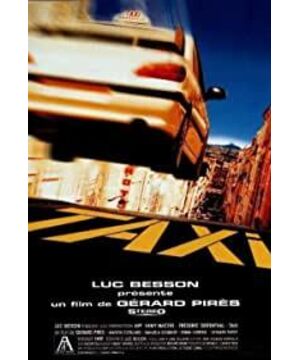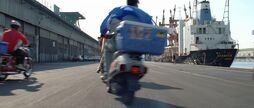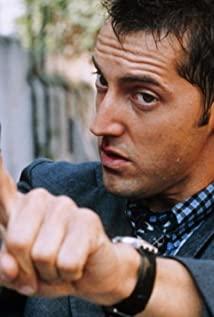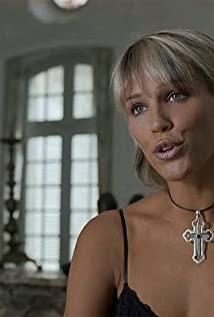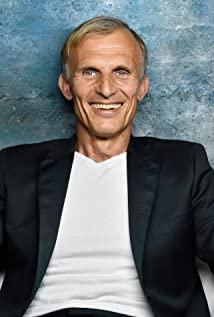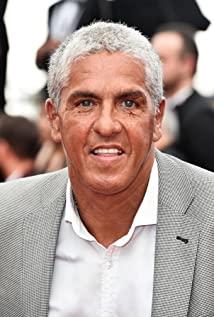"Taxi Express" series of films, divided into 1-5, this action film written and supervised by Luc Besson is famous for car chasing scenes, especially the scene of crossing the streets of Marseille at the end. The style of the film is between video games and cartoons, with a compact plot and constant laughter. As soon as the opening scene, Daniel has won the official racer with superb driving skills and won the cheers of the audience. In 1998, "Taxi 1" won the French box office championship in one fell swoop. The number of viewers reached 6.4 million, the box office exceeded 100 million, and it won seven nominations for the Caesar Award, once becoming a symbol of the French movie box office. Director Gilar Pires, screenwriter Luc Besson, starring Sammy Nasseri, Frederick Diferdo, Marion Cotillard, Manuela Gourary Emma Sjöberg, Bernard Faci, producer Michele Petin, Laurent Petin distribution company France ARP Sélection Lionsgate Entertainment (US) 15 movies and videos all  06: Understand director information in 12 seconds Name: Luc Besson English name: Luc Besson Birthplace: Paris, France Birthday: March 18, 1959 Occupation: French director, concurrently producer, screenwriter, actor, editor Other quotations: A movie is just a piece of aspirin (aspirin is an analgesic, here can be understood as the movie can temporarily anesthetize people and make people forget the reality) Personal experience Luc Besson was born in Paris, France on March 18, 1959, and a French director , Also serves as producer, screenwriter, actor, editor, etc., because of his repeated box office success, he is known as the Spielberg of France. The works have a fast pace, luxurious style and great commercial value. Some people say that his film is actually an American film, but it was shot in France. Both parents are masters of water sports, and mother is also a diving instructor. When he was a teenager, he dreamed of becoming an expert in ocean and dolphins, but because of a diving accident, he had to give up this wish and turn to movies. At the age of 17, he joined Gaomeng Films as an assistant before graduating from high school. He came to Los Angeles at the age of 19. I took a 3-month film production course. And after starting to shoot some experimental short films, he worked as an assistant director after returning to China. In 1983, Besson's film debut "The Last Battle" came out. This multi-award-winning black and white, wide-screen silent science fiction film was said to be made by the 23-year-old him for 3 francs and 6 su. Luc Besson seems to prove to the world that even if you don't have a professional film education and can't find investment, you can still make a unique film in France. For this reason, Besson was once regarded as the pioneer of young French directors, whether he likes it or not. "Metro" and "Blue Sea and Blue Sky" have won Luc Besson's reputation both domestically and internationally. Although the French Caesar Award of that year was a bit stingy and only awarded the "Best Recording" and "Best Music" awards to "Blue Sea and Blue Sky". But Besson publicly stated that this film is the most proud work in his directorial career. After all, this work is devoted to the passion and dreams of Besson's youth, and Besson can finally use his camera to capture the light, shadow and life of the ocean he saw in his childhood. The diver Jack in the film was finally buried in the sea. More precisely, that was his real survival. Isn't Jack the incarnation of Besson's ideals?  There was a so-called young BBC director in France in the 1980s, which specifically refers to Beinex, Besson, Carax (Benex, Besson, Carax). Although these three cutting-edge directors have many similarities and differences, their greatest common denominator is their inexplicable preference for blue. Since Benéx’s "Female Singer" filmed in 1980, blue has been full of silver, Caracas has filmed "Humble Blood"; and Besson’s "Blue Sea and Blue Sky" is from the title to the content. All have a blue tone. The yearning and romantic feelings of the sea that Besson painstakingly created are naturally unmatched. His wonderful underwater photography may benefit the directors of "Piano Lesson" and "Titanic" a lot. "Nikita" and "Killer Leon" (also known as "This Killer Is Not So Cold") are Luc Besson's successful transition from art film to commercial film. "Nikita" tells how a female gang member was transformed into a national professional agent killer. The identity of her agent killer and the love and humanity in her heart constitute the uniqueness of this film. "Killer Leon" tells the story between a killer who longs for good and a girl who longs for revenge from evil. This artistic French commercial film is still an example that film students from all over the world talk about. Many details such as the green plant around Leon and "Remember to never kill women and children". The dialogue is unforgettable. The green plant alone is beyond the imagination of Hollywood screenwriters. "Killer Leon" won the Caesars Award for Best Picture, and Besson won the Best Director Award. Since the 1990s, the prosperity of French art films has pushed French commercial films to an awkward position. It takes a lot of courage to make art films outside of France, because you have to face severe survival problems. In France However, if a film artist wants to make a commercial film that caters to the tastes of the public, he seems to have more courage. Luc Besson is such an "untimely" director.  A total of 5 taxi express In the mid-1980s, Besson filmed "Metro", "Blue Sea and Blue Sky" and other art films, and was called a promising young director by French critics. In the 1990s, Besson was filming " After Killer Leon and The Fifth Element, they were despised by French film theory circles. "The Fifth Element" achieved a global revenue of 270 million U.S. dollars in 1997, ranking third in the world movie that year. No matter how the critics comment on this film, it shows us the future in the eyes of a French director. The world, in the narrative of computer technology and time and space, brings us a trace of history and humanity that is different from Hollywood blockbusters. Luc Besson is the most watched contemporary French film scene And the most controversial director. Although the commercial success of "The Fifth Element" doubled the turnover of Gaumont, France's largest film company, Besson is often said to be a negative example of surrendering to Hollywood films in China. For this reason, the depressed Besson often floats across the sea to find a friend in Hollywood. The film "The Fifth Element" combines science fiction, thrills and fights. It is the first English dialogue film in European history that cost nearly 100 million U.S. dollars. It shows the determination and courage of French filmmakers to rejuvenate their country and the European film industry. Won the 1997 Cannes International Film Festival Technology Award. The content of the story was originally conceived by Luc Besson at the age of 16. Lucas’ Star Wars had just come out at the time. Obviously Besson’s imagination and conception were compared with it. It's still immature. Twenty years later, Besson still remembers his boyhood vision, after 20 years of planning. The script contains the basic elements of Besson's first five feature films. Although some critics think that "The Fifth Element" seems to be more like a French futuristic burlesque, and that it is just a good visual effect, it was screened as the opening film at the opening ceremony of the 50th Xana Film Festival in 1997. At that time, this sci-fi movie that showed the future of mankind in the 23rd century still caused a sensation. In the film, the protagonist played by Bruce Willis driving his gravitation-resistant yellow taxi flying over New York City is not inferior to Lucas’s interstellar spacecraft. Besson, who grew up watching "Star Wars", finally joined Lucas 20 years later. As early as in "Blue Sea and Blue Sky", Luc Besson showed his fascination and pursuit of big productions and grand scenes. Beginning with "The Fifth Element" and "Joan of Arc", Besson gradually drifted away from the movie form he belonged to in the past, and set his sights on the international market, not only playing tricks in genres, but also in production costs. Constantly escalating, this may be the main reason Besson was criticized in his country. At this time, Hollywood also began to recruit troops from all over the world, and the top choices were Wu Yusen and Luc Besson. The romantic French style of Besson and the heroic complex of Wu Yusen's oriental taste have been favored and imitated by Hollywood. Besson finally used "The Fifth Element" and "Joan of Arc" to prove that blockbuster entertainment is not a patent of Hollywood. The French can not only produce low-cost, small-produced art films, but also produce commercial blockbusters that are profitable globally. A Frenchman can "contend with them" on American territory. Today’s Besson seems to have become a successful role model. We can think of him as a major commercial film director of the same type as Spielberg without hesitation. Today, a great price has been paid. As the first high-cost European film, when "The Fifth Element" was released in theaters in the summer of 1997, the box office was not optimistic. French audiences accustomed to art films and American audiences influenced by Hollywood commercials were mixed. Don't have too much interest. Critics' reactions are also more derogatory than praise, and the most deadly aspect of the film is its huge cost of up to 100 million US dollars. But a miracle appeared. "The Fifth Element" actually overcame its inherent shortcomings and ominous omens. It was widely screened in several major Western countries in less than a month. The film made a fortune. Songhe's film is still treated low-key. Luc Besson did not shake his pursuit and beliefs because of these evaluations. He wanted to make a film that was well received by French and Americans. His "Joan of Arc" selected the appropriate blend of history and reality, nationality and internationality, and received rave reviews after the filming. Joan of Arc is the goddess in the hearts of the French, and she has made an immortal legend with her life. There are countless film and television works about Joan of Arc, but there are only three films worthy of leaving a fortune in film history. They are: Director Dreyer’s "The Crucifixion of Joan of Arc", which put an end to the silent film era. "The Passion of Joan of Arc" directed by Bresson, which is extremely faithful to the religious plot and original trial materials; the epic blockbuster "Jan of Arc" filmed by Luc Besson in three years.  Bresson’s "The Crucifixion of Joan of Arc" only intercepts a piece of historical facts about Joan of Arc's trial and walking towards the torture, showing the heroine's religious beliefs and true historical moments. And Luc Besson's "Joan of Arc" shows the magnificent Anglo-French Hundred Years' War and Joan's romantic feelings as a girl and a French soldier. Like Bresson, Luc Besson is also a lonely explorer in the French film industry. Perhaps this is the only similarity between these two French directors of different eras. Perhaps it is this only similarity that makes them also prefer the historical figure of Joan of Arc, but their interpretation of historical figures is different. In Luc Besson’s director’s notes, we see Besson’s evaluation of Joan of Arc: Joan is our ancestor. What was captured between her faith and innocence was lost in her time, just like The same as what we lost in our own time. Besson expressed his unique thinking about this period of history in this film: "Does the human mind have to follow such a tortuous path to discover the goodness hidden behind the evil?" Tan’s lonely explorer, even in his commercial blockbuster, we can feel his ultimate recognition of history and life. Knowledge, touched his mental journey as a French soldier. Whether it is Jack in "Blue Sea and Blue Sky", the killer in "Killer Leon", or Joan of Arc in "Joan of Arc", we all feel: This is Luc Besson.
View more about Taxi reviews


